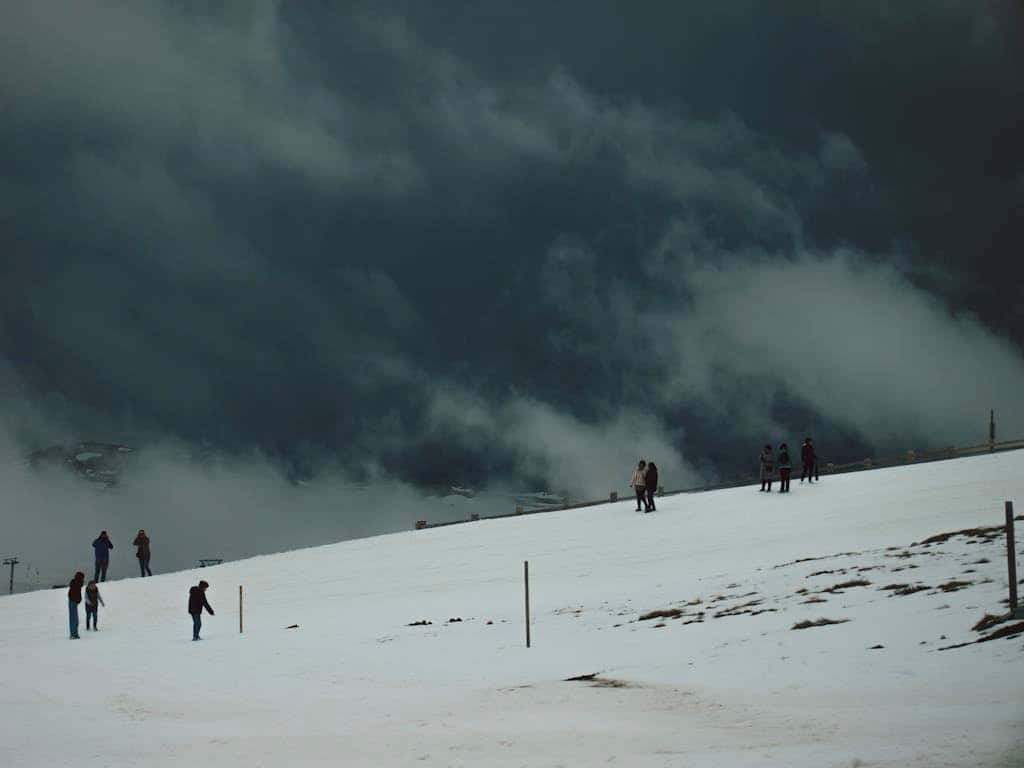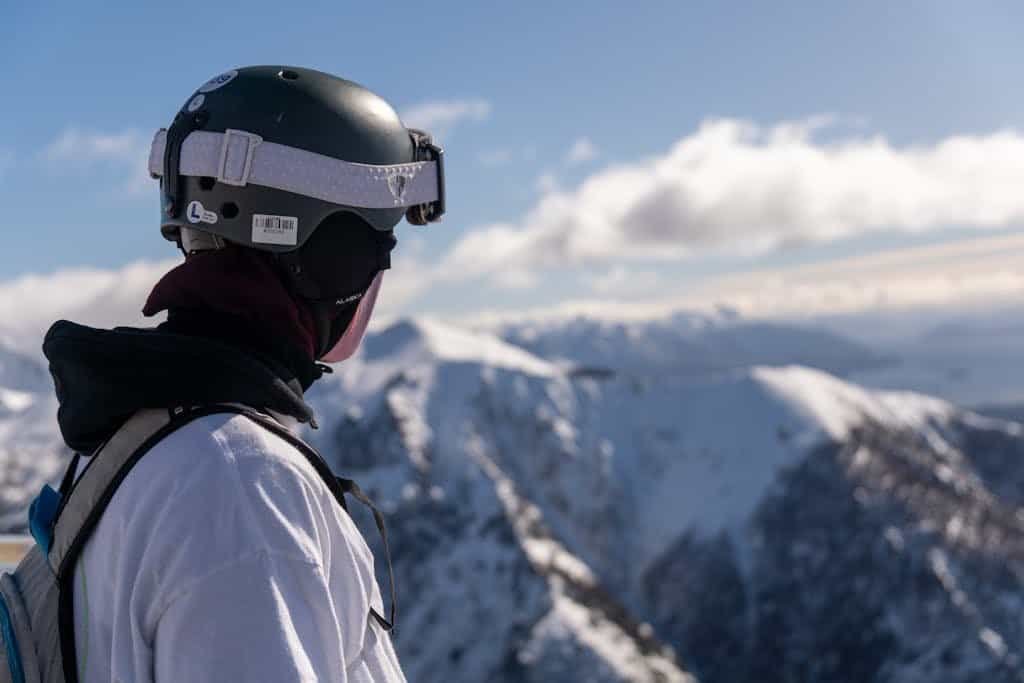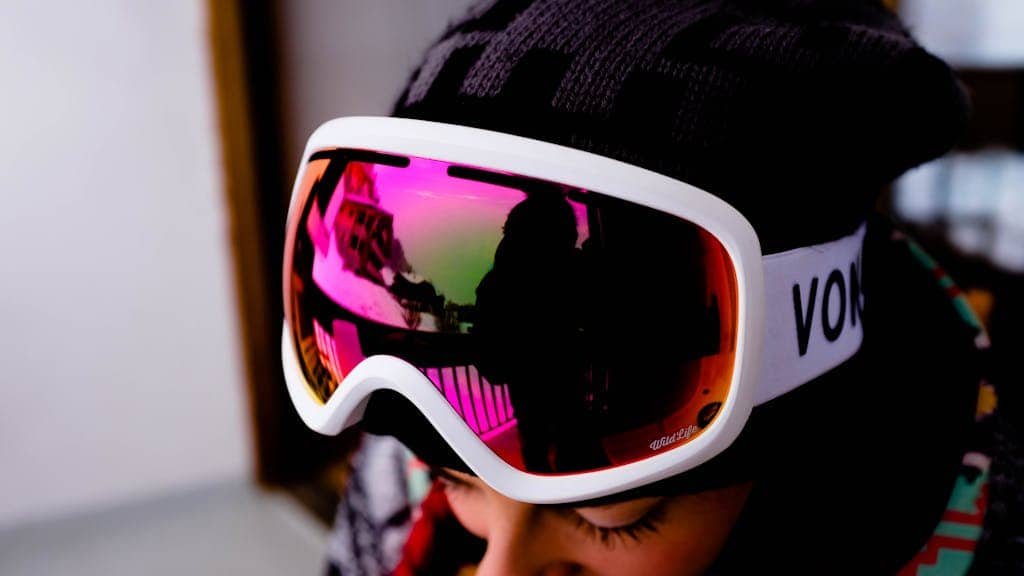How To Prevent Ski Goggles from Fogging

Heading out to the slopes promises an exhilarating day of skiing, but nothing puts a damper on that excitement quite like fogged-up ski goggles.
It’s a common annoyance that many skiers, from novices to the more experienced, face. But you know what, it’s an issue that can be tackled with a few proactive steps.
In this article, we’ll guide you through several effective strategies to keep your vision clear and your skiing experience enjoyable. From managing moisture to optimizing airflow around your goggles, we’ve got you covered.
If you’re in the market for a new pair of ski goggles, you should check out my article about the best ski goggles for 2024 to find the best options in the market right now.
Why Do Goggles Fog Up?

So, first things first. Why do goggles fog up?
Fogging occurs when warm moist air comes into contact with a cold surface, causing condensation. This process is no different when it comes to ski goggles. The warm air inside your goggles, usually generated from your body heat and breath, reacts with the cold lens surface, leading to fog formation. Understanding the science behind fogging is key to finding effective solutions to prevent it.
Regarding fogging, it’s not just about the temperature and humidity levels; other factors can also influence the formation of fog on your goggles.
One such factor is the type of lens coating. Anti-fog coatings can help reduce fogging by dispersing the water droplets that cause condensation. Additionally, the fit of your goggles can impact fogging. Gaps around the edges of the goggles can allow warm, moist air to escape, reducing the likelihood of fogging.
Tips To Avoid Ski Goggles From Fogging
1. Choose the Right Goggles
Investing in goggles that are specifically designed to minimize fogging will undoubtedly contribute to a better skiing experience. When choosing your goggles, pay attention to key features that promote optimal ventilation and anti-fog properties.
Goggles with efficient ventilation systems ensure that fresh air circulates inside, preventing the lenses from getting too warm and fogging up.
Ventilation Features to Look For
Look for goggles that feature proper ventilation systems, such as vents or channels that allow air circulation inside the goggles.
Some goggles even have adjustable ventilation, allowing you to customize the airflow based on the weather conditions and your personal preference.
Additionally, consider goggles with strategically placed vents that not only prevent fogging but also help in maintaining a clear field of vision in varying weather conditions, be it sunny or snowy.
Anti-Fog Coatings and Lenses
Many goggles come with anti-fog coatings on their lenses. These coatings help to eliminate moisture build-up and minimize fogging. Look for goggles that have a high-quality anti-fog coating applied to the inner and outer lens surfaces.
Consider goggles with dual-layer lenses or those with a thermal barrier to further prevent fog formation.
2. Proper Goggles Maintenance And Handling
Proper goggle care is important not only for preventing fogging but also to prolong the life of your goggles. By following some simple cleaning and maintenance practices, you can significantly reduce the occurrence of fogging and ensure your goggles stay in top condition.
When it comes to caring for your goggles, it’s not just about keeping them clean; it’s also about knowing the type of materials they are made of. Different goggle lenses may require specific cleaning methods to avoid scratching or damaging the surface. For example, polarized lenses need extra care to preserve their special coating, while photochromic lenses may react differently to certain cleaning agents.
Cleaning your goggles after every use helps maintain it. Use a soft microfiber cloth or lens-specific cleaning wipes to remove any dirt, smudges, or oils from the lens surface. Avoid using abrasive materials or harsh chemicals that could damage the lens. Additionally, be mindful of the cloth you use, as an unclean cloth can transfer oils and residue back onto the lens, contributing to fogging.
You may want to consider investing in a goggle-specific cleaning solution that not only cleans but also adds a temporary anti-fog layer to the lens.
Safe Storage for Ski Goggles
Proper storage of your ski goggles is often overlooked but can make a significant difference in preventing fogging. Always store your goggles in a cool, dry place, away from direct sunlight. Avoid leaving them in your car or exposing them to extreme temperatures, as this can affect the anti-fog coatings.
Always use a protective case or pouch to store your goggles when not in use. This not only shields them from potential damage but also helps maintain their shape and prevent scratches on the lenses. Investing in a designated storage solution for your goggles is a small step that can have a big impact on their longevity.

3. Use of Anti Fog Products
In addition to choosing the right goggles, several anti-fog solutions can be employed to enhance your goggle’s anti-fog properties. Fogging can be a major nuisance during various activities such as snowboarding, skiing, or even motorcycling. Having a clear field of vision is important for safety and performance.
Make sure to select an anti-fog solution that is compatible with different lens materials. Some solutions may work well on polycarbonate lenses commonly found in sports goggles, while others may be better suited for glass lenses. Understanding the composition of your lenses can help you choose the most effective anti-fog product for your specific needs.
Commercial Anti-Fog Products
Various commercial anti-fog products are available on the market, like Optix 55 Anti-Fog Spray, specifically formulated to prevent fogging. These products typically come in the form of sprays or gels that you can apply to your goggles’ lenses. Make sure to check your ski goggle’s manufacturer and check with them if there is any specific product you need to use.
Follow the manufacturer’s instructions for applying and reapplying these products for optimal results. It’s important to note that some anti-fog solutions may contain chemicals that could potentially damage certain lens coatings, so always check for compatibility before use.
Additionally, some anti-fog products offer long-lasting protection, reducing the need for frequent reapplication. This can be particularly beneficial for extended outdoor activities where access to cleaning supplies may be limited. Investing in a high-quality anti-fog solution can provide peace of mind and ensure a clear view throughout your adventures.
DIY Home Remedies for Fog Prevention
If you prefer a more DIY approach, some household products can also help prevent fogging. One common household remedy is to apply a small amount of toothpaste to your lenses and wipe it off gently with a microfiber cloth. This leaves a thin, invisible film on the lens surface that helps to prevent fogging. However, be cautious when using toothpaste on coated lenses, as abrasive ingredients could cause damage.
Another homemade solution is to mix a small amount of baby shampoo with water and apply it to the lenses. Rinse off the mixture and gently wipe the lenses dry. This creates a similar invisible barrier, reducing the chances of fogging. DIY remedies can be cost-effective and easily accessible, making them a convenient option for individuals looking for quick anti-fog solutions.
4. Managing Moisture and Heat
Face Masks and Neck Warmers
Adjust how you wear face masks or neck warmers to prevent exhaled air from directing upwards into your goggles. Ensuring these accessories are not tucked under the goggle frame can make a significant difference.
Regulating Body Temperature
If possible, regulate your body temperature by adjusting your layers and taking breaks when needed. Overheating can increase the moisture around your face, contributing to fogging.
5. Proper Goggle Placement and Usage
Ensure that your goggles fit snugly against your face and create a proper seal. This minimizes the chances of warm air escaping from your face and entering the goggle chamber.
Avoid removing your goggles unnecessarily while on the slopes, as this allows warm air to enter the goggles and increases the risk of fogging. If needed, try to find a sheltered area to adjust or remove your goggles.

6. Wear a Helmet with Goggle Integration
Helmets designed to work seamlessly with goggles help reduce gaps that can allow moisture-laden air to reach the lens surface. This integration also improves overall comfort and protection, making it a win-win for skiers.
7. Goggle Fit and Positioning
A proper fit is crucial for preventing fogging. Goggles that are too tight can restrict airflow, while those too loose may not seal properly, allowing warm air to enter. Adjust the strap for a snug, comfortable fit that maintains ventilation without allowing cold air to flush excessively.
8. Emergency Solutions
If you find yourself on the slopes with fogging issues and no immediate remedies, try creating a small gap between your face and the goggles to increase air circulation. This can be a temporary fix to reduce fogging until you can apply a more permanent solutio
How does temperature affect fogging?

When the temperature inside the goggles is significantly higher than the outside temperature, condensation occurs, resulting in foggy lenses. To minimize this temperature differential, it is essential to maintain a consistent temperature inside the goggles.
And one way to regulate the temperature inside your goggles is by using ventilation systems. Many modern goggles come equipped with vents that allow airflow, helping to equalize the temperature inside and outside the goggles.
Humidity levels also contribute to goggle fogging. Higher humidity means more moisture in the air, increasing the chances of condensation on the lens.
Another way to combat fogging related to humidity is by using anti-fog wipes or sprays. These products create a thin film on the lens that helps prevent water droplets from forming, keeping your vision clear in various weather conditions.
Understanding how temperature, humidity, lens coatings, and ventilation systems affect fogging allows you to choose the right strategies to ensure optimal visibility during your winter adventures.
Dealing with Changing Weather
As weather conditions change, the temperature and humidity levels can fluctuate. Monitor the weather forecast and be prepared with the appropriate goggles for the conditions. Consider carrying an extra lens or goggles with interchangeable lenses to adapt quickly and minimize fogging.
Adapting to Cold and Humid Conditions
When skiing in colder and more humid environments, take extra precautions to counter fogging. Use additional anti-fog solutions or wipes specifically designed for these conditions. Plan frequent breaks where you can remove your goggles and allow them to dry if necessary.
It’s important to note that the type of ventilation in your goggles can also impact fogging. Goggles with proper ventilation systems allow for airflow, reducing the likelihood of fogging. Look for goggles with vents that are strategically placed to promote air circulation while keeping snow and moisture out.
Most importantly, the fit of your goggles plays a crucial role in preventing fogging. Goggles that fit snugly against your face create a barrier that helps regulate temperature and reduce the chances of fogging. Make sure to adjust the strap of your goggles to achieve a secure and comfortable fit that minimizes gaps where warm air can escape and condense on the lens.
As we wrap up, remember that fogging ski goggles don’t have to be an inevitable part of your skiing experience. With the right approach, from selecting the perfect pair to implementing simple, effective strategies for maintenance and wear, you can significantly reduce the chances of fog clouding your vision on the slopes.
It’s all about understanding the balance between moisture management and airflow, alongside taking good care of your gear. So, the next time you prepare for a day of skiing, keep these tips in mind.






